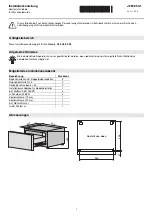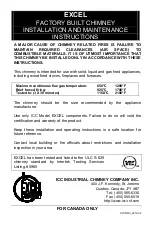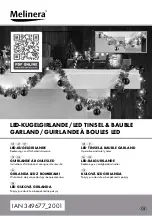
EnergyCell Batteries
900-0227-01-00 Rev A
15
Remote Temperature Sensor
OutBack inverter/chargers and charge controllers are equipped with the Remote Temperature
Sensor (RTS) which attaches to the battery and automatically adjusts the charger settings.
When the RTS is used, it should be placed on the battery sidewall, as close to the center of the
battery (or to the center of the bank) as possible.
The charger determines the RTS compensation factor. Most OutBack chargers are preset to a
compensation of 5 mV per cell. If an RTS is not present, if a different charger is in use, or if a
different compensation factor is required, it may be necessary to adjust the charger settings
manually. The RTS should be checked periodically. Failure to compensate correctly may result
in wrong voltages.
Improper Use
CAUTION: Equipment Damage
Read all items below. Maintenance should be performed as noted on page 18.
Failure to follow these instructions can result in battery damage which is not covered
under the EnergyCell warranty.
CAUTION: Equipment Damage
Do not exceed the specified absorption voltage when charging any EnergyCell
battery. Excessive voltage could result in battery damage which is not covered
under the EnergyCell warranty.
For any EnergyCell battery, if the charger settings are too high, this will cause premature aging
of the battery, including loss of electrolyte due to gassing. The result will be permanent loss of
some battery capacity and decreased battery life. This is also true for battery charging that is
not compensated for high temperatures.
“Thermal runaway” can result from high ambient temperatures, charging at higher voltages over
extended time, incorrect temperature compensation, or shorted cells. When the buildup of
internal heat exceeds the rate of cooling, the battery’s chemical reaction accelerates. The
reaction releases even more heat, which in turn continues to speed up the reaction. Thermal
runaway causes severe heat, gassing, lost electrolyte, and cell damage. It usually requires
battery replacement. The process can be halted by turning off the charger. However, if cell
damage has occurred, shorted cells may continue to generate heat and gas for some time.
If an EnergyCell battery is not charged completely (or if the settings are too low), it will not reach
100% SoC. Its total capacity will not be available during the next discharge cycle. This capacity
will become progressively less and less over subsequent cycles. Long-term undercharging will
result in decreased battery life. This is also true for battery charging that is not compensated for
low temperatures.






































